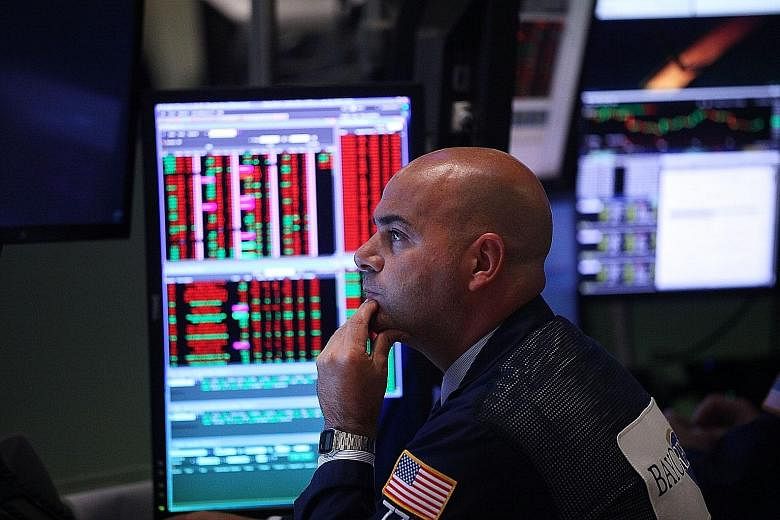After another torrid week that saw Asian markets mired in further selldown, sentiments will likely remain fragile going forward even as the recent dip may be nearing a point of inflection.
All eyes will be on how the Chinese markets perform when they open today following their closure last Thursday and Friday for a public holiday.
Analysts see few reasons for comfort as China's leading benchmark Shanghai Composite had fallen three straight days before that.
People's Bank of China governor Zhou Xiaochuan last Saturday made another attempt to rally sentiments, saying in a press statement that the financial markets are set for stability as the recent stock market corrections are nearly over. The statement followed the Group of 20 meeting of finance ministers and central bankers in Ankara, Turkey.
But CMC Markets analyst Nicholas Teo remained sceptical, saying: "The Chinese markets may well be bottoming out after the 40 per cent collapse since June, but we still saw a heavy regional selldown throughout last week even though China was less of a factor."
The MSCI Asia Pacific ex-Japan index - which tracks the large and mid caps in Asia's top 10 markets outside Japan - was down over 4 per cent last week, posting its worst five-day losing streak since 2011.
On Wall Street, the Dow Jones Industrial Average lost 3.2 per cent for the week, including last Friday's 1.66 per cent fall after the August non-farm payroll figures for the US were lower than expected.
"I thought (the job data) was market-friendly because it suggested the Fed could still afford to delay the rate hikes, but again the United States markets went down. All in all it showed just how fragile global markets are right now after the multi-week sell-off," Mr Teo said.
Sentiments in Singapore are expected to be fragile. The benchmark Straits Times Index (STI) was down 3.12 per cent last week and remisiers reckon it will stay in a tight trading range below the 3,000-point level before the next meeting of the US Federal Reserve on Sept 16.
Despite the poor sentiments, some counters managed to eke out gains. Notably, Sats closed 5.4 per cent up last Friday to cap a three-day 6.3 per cent rise, following news that it will become an STI constituent come Sept 21.
The other two new STI entrants - UOL Group and Yangzijiang Shipbuilding - also ended higher on Friday, by 0.5 per cent and 2.36 per cent, respectively.
There was positive news about Sats - which provides integrated ground and flight catering services at Changi Airport, which will launch an automated e-commerce air hub by December next year. The move may improve Sats' productivity by over 30 per cent, OCBC Investment Research analyst Eugene Chua said in a note last month.
Beyond the few pockets of good news, the local market should brace itself for further volatility, not least because of the General Election buzz this week.


